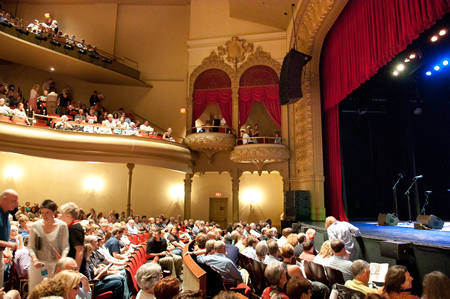

This church is the oldest black Baptist congregation in Kentucky and the third-oldest in the United States. Durrett had helped guide " The Travelling Church" on its trek to Kentucky. Around 1790, the First African Baptist Church was founded in Lexington by Peter Durrett, a Baptist preacher and slave held by Joseph Craig.

On May 6, 1782, the town of Lexington was chartered by an act of the Virginia General Assembly. Led by the preacher Lewis Craig and Captain William Ellis, the Travelling Church established numerous churches, including the South Elkhorn Christian Church in Lexington. In December, 1781, a huge caravan of around 600 pioneers from Spotsylvania County, Virginia-dubbed "The Travelling Church"-arrived in the Lexington area. Historic Henry Clay law office in downtown Lexington Within two years of signing the Agreement, both John and Jacob Wymore were killed by Indians in separate incidents outside the walls of "Fort Lexington". While the ostensible founder of Lexington, William McConnell, is not one of the signees, an Alexander McConnell is.

(Corn is the only crop specifically mentioned in the Articles.) It is known that several of these original settlers (perhaps many of them) served under General George Rogers Clark in the Illinois campaign (also called the Northwestern campaign) against the British in 1778–79. Presumably the "In" lots were for the family dwelling inside the fortifications, while the "Out" lots were to be "cleared" for farming. The Articles allocated land by granting "In" lots of 1/2 acre to each share, along with "Out" lots of 5 acres for each share. On January 25, 1780, 45 original settlers signed the Lexington Compact, known also as the "Articles of Agreement, made by the inhabitants of the town of Lexington, in the County of Kentucky." The settlement at Lexington at this time was also known as Fort Lexington, as it was surrounded by fortifications to protect from the British and from Indians. It was the first of many American places to be named after the Massachusetts town. Upon hearing of the colonists' victory in the Battles of Lexington and Concord on April 19, 1775, they named the site Lexington.

A party of frontiersmen, led by William McConnell, camped on the Middle Fork of Elkhorn Creek (now known as Town Branch and rerouted under Vine Street) at the site of the present-day McConnell Springs. Lexington was named in June 1775, in what was then considered Fincastle County, Virginia, 17 years before Kentucky became a state. See also: Timeline of Lexington, Kentucky Lexington, Kentucky, in the American Civil War History of Kentucky and National Register of Historic Places listings in Fayette County, Kentucky It has a nonpartisan mayor-council form of government, with 12 council districts and three members elected at large, with the highest vote-getter designated vice mayor. Lexington is consolidated entirely within Fayette County, and vice versa. Notable locations in the city include the Kentucky Horse Park, The Red Mile and Keeneland race courses, Rupp Arena, Central Bank Center, Transylvania University, the University of Kentucky, and Bluegrass Community and Technical College.Īs of the 2020 census the population was 322,570, anchoring a metropolitan area of 516,811 people and a combined statistical area of 747,919 people. Known as the "Horse Capital of the World", it is within the state's Bluegrass region. By land area, it is the country's 28th-largest city. By population, it is the second-largest city in Kentucky and 57th-largest city in the United States. Lexington is a city in Kentucky and the county seat of Fayette County.


 0 kommentar(er)
0 kommentar(er)
